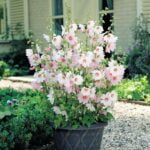Introduction
Raised bed gardening is a popular and effective way to produce high yields of healthy plants in desert climates like that of Arizona. By building raised beds, gardeners can control the quality of nutrients and soil their plants are growing in while avoiding undesirable conditions that sometimes occur in a traditional garden. With careful management and dedication, Arizona gardeners can reap the rewards of homegrown fruits, vegetables, nuts, herbs and flowers with raised bed gardening.
The great thing about raised bed gardening for those living in Arizona is that it helps protect your plants from the sometimes intense heat or cold temperatures regularly experienced throughout the year. The mounded earth creates an air pocket which generally keeps the temperature more consistent resulting in more consistent harvesting schedules as well as higher yields. Additionally, by controlling the moisture levels of your soil more easily you can ensure your fruits and vegetables will stay hydrated while also avoiding waterlogging when there may be too much rainfall or direct irrigation is used.
Additionally, making the most of growing space is made easier with raised bed gardening since less weeding is required due to improved drainage capabilities which tend to be better than traditional gardens that use open areas on the ground. Building a raised bed does require some effort but it pays off once you’re reaping the rewards from your time and energy invested into it.
In order to get started with raised-bed gardening in Arizona there are some initial steps one needs to consider such as deciding on design & size, location & accessibility as well as suitable materials to use for construction such as wood or metal railings. After deciding upon these variables one should begin by preparing and assessing the soil quality they will be using followed by conditioning it before planting any seeds or seedlings into it. Lastly, water conservation during hot days will be important to keep fruit trees hydrated while avoiding over-irrigation problems that typically occur during spells of heavy rain or if a water sprinkler system is used too frequently—utilizing soaker hoses instead may be beneficial here while still providing an even distribution of water onto tender roots during summer days!
Arizona Climate Considerations
Arizona is known for its unique climate compared to other states. Unlike most of the country, Arizona experiences hot and dry summers with little to no rainfall. This climate can make traditional gardening, where plants are grown directly in the ground, incredibly difficult and often insurmountable for many gardeners.
Enter raised bed gardening. Raised beds provide an attractive way for Arizona gardeners to grow a bounty of plants, despite hot and arid conditions. Soil in raised beds drain quicker than soil in traditional flowerbeds or gardens, which helps during heavy rain or monsoon rains that can suddenly catch your plants off guard and cause flooding. Additionally, when filled with a well-draining soil mix specifically tailored to Arizona’s climate and combined with mulch on top of the soil to help retain water while preventing weeds from taking over, raised beds excel at regulating temperature throughout the seasons, allowing you to keep your plants healthy and vibrant all year long.
Summer days can get particularly hot in Arizona so it’s important to protection your plants with shade cloths or reflective material such as aluminum foil wraped around perimeter fences or staked near plantings. Keeping these materials constantly above the raised beds will help prevent heat trapping between them and the ground area keeping it cool throughout the hottest days on summer season so your plants endure healthy conditions well into autumn months.
DIY Raised Beds
Raised bed gardening in Arizona is a great way to ensure that your plants get the best possible chance of thriving in desert conditions. DIY raised beds offer a cost-effective and customizable means of creating perfect growing conditions and can be constructed easily, even with limited space. The materials needed for building your own elevated garden box are simple and straightforward: long wooden boards such as planks or 2 x 6 pieces (most lumber yards will cut the timber down to size for a nominal fee); screws; galvanized or stainless steel nails (or galvanized or stainless steel bolts if using thicker planks); a power saw/circular saw (or a hand-held saw if you’re going small); and, soil designed specifically for your type of plants.
For those who would rather just buy pre-made raised bed boxes, there are plenty of online outlets that sell ready-to-assemble kits. The benefits include having no cutting required onsite and boxes sized exactly to fit any space specification. Some stores also offer rot-resistant frames made from resin or cedar; these come without tools needed and with easy assembly instructions. Some will even deliver them directly to the site. Alternatively, many local home improvement stores carry kits which can save a lot on both time and money when compared with buying everything separately.
Finding the Right Soil and Compatible Plants
The best soil for raised bed gardening in Arizona is a combination of compost and nutrient-rich potting soil. Adding amendments such as peat moss, perlite and vermiculite will help to ensure that the soil has the correct drainage and aeration rate. It is important to get your soil tested regularly to make sure it has the right things in it for the plants you’re growing. Regular fertilization with low-nitrogen, slow-release fertilizers may be necessary for depending on the type of plants being grown.
When it comes to eating in Arizona, there are many types of vegetables that can be grown in raised beds. Tomatoes, squash, peppers, cucumbers, spinach and kale all love hot weather and can thrive in Southwest climates. Herbs like cilantro, basil and oregano do well here, too! Most root crops such as carrots, radishes, beets and turnips fare well but also require more water often than other types of vegetables due to their deep roots. Flowers like petunias, marigolds and primroses usually do very well when planted in raised beds surrounded by some shade cloth or mulch material during peak summer heat hours to keep temperatures down. Fruiting plants such as berries or pomegranates do extremely well when given proper care though they may require regular fertilizer treatment if observed fruit quality is wanting or dropping off over time.
Maintenance and Pest Control for Raised Bed Gardens
When it comes to maintaining your raised bed garden in Arizona, the three most important components are soil preparation, fertilization and pest control. Soil preparation is essential for optimal growth of your plants. Before planting, ensure that your soil is free from weeds, rocks, or other debris as these can impede plant growth. Adding compost or a quality potting mix helps to improve the texture of the soil and provides essential nutrients for better yields.
Fertilization is another important component of maintaining a productive raised bed garden. Different plants require different nutrients, so selecting the right organic fertilizer which meets the needs of your crops is important. High-quality organic fertilizers help create a balanced microbial ecosystem in the soil which promotes healthy roots and foliage.
Finally, pest control must be practiced in order to have a thriving garden in Arizona’s hot climate. As temperatures rise, so do insects and other pests that can cause damage to your garden if they become established in the environment. Taking preventative measures such as planting companion plants with insect repellent properties or using row covers are effective ways to limit potential infestations. If an infestation does occur there are a few steps you can take such as removing affected plants or applying natural insecticides such as neem oil or insecticidal soap to reduce their population size and get rid of them entirely once the weather has cooled down again.
Summary of Benefits of Raised Bed Gardening in Arizona
Raised bed gardening in Arizona is becoming increasingly popular due to the various advantages it provides. For example, raised beds offer improved soil drainage and aeration, two key elements of successful gardening in much warmer climates. This is largely due to the fact that raised beds are constructed with organic material that develops porous soil, which helps water and air reach root systems more easily than in ground gardens. Moreover, raised bed gardening has drastically improved pest control. As Arizona’s summers tend to be hot and dry, pests can be plentiful and difficult to manage. However, raised bed gardens can benefit from greater pest control simply by being built off of the ground, where there are fewer bugs near the root zone and cooler air can reduce levels of humidity needed for insect growth and reproduction. Additionally, by building barrier walls with organic materials like stones or bricks around beds can help keep pests out entirely. Lastly, because of the height provided by the walls of a raised bed garden in Arizona, it becomes easier to access plants while also providing a visual aid when checking on crops’ health or identifying weeds.
Conclusion
Raised bed gardening in Arizona is becoming a popular choice for both amateur and experienced gardeners alike. This type of gardening requires less labor and allows for deeper roots, which can help protect against the intense heat of the desert climate. In addition to requiring less labor, raised beds provide a visual element to your landscape and can easily be designed with varieties that require more attention than traditional methods. A properly managed raised bed garden will work well even during extreme weather conditions, making it a reliable source of food production throughout the year.
When starting a raised bed garden in Arizona it is important to invest in quality soil materials that are suited to the climate. Also, choosing plant types native to the area or those that enjoy desert environments will make maintenance easier by taking into account temperature, rain availability and sunlight intensity. Lastly, maintaining the beds regularly including weeding and pest prevention is essential in order to keep them healthy and productive over time. With proper planning, care and maintenance, a beautiful and functional raised bed garden is achievable which can yield productive results for many years!

Welcome to my gardening blog! I am passionate about plants and enjoy sharing my knowledge and experiences with others. In this blog, I will write about everything related to gardening, from tips on how to get started to updates on my own garden projects.





